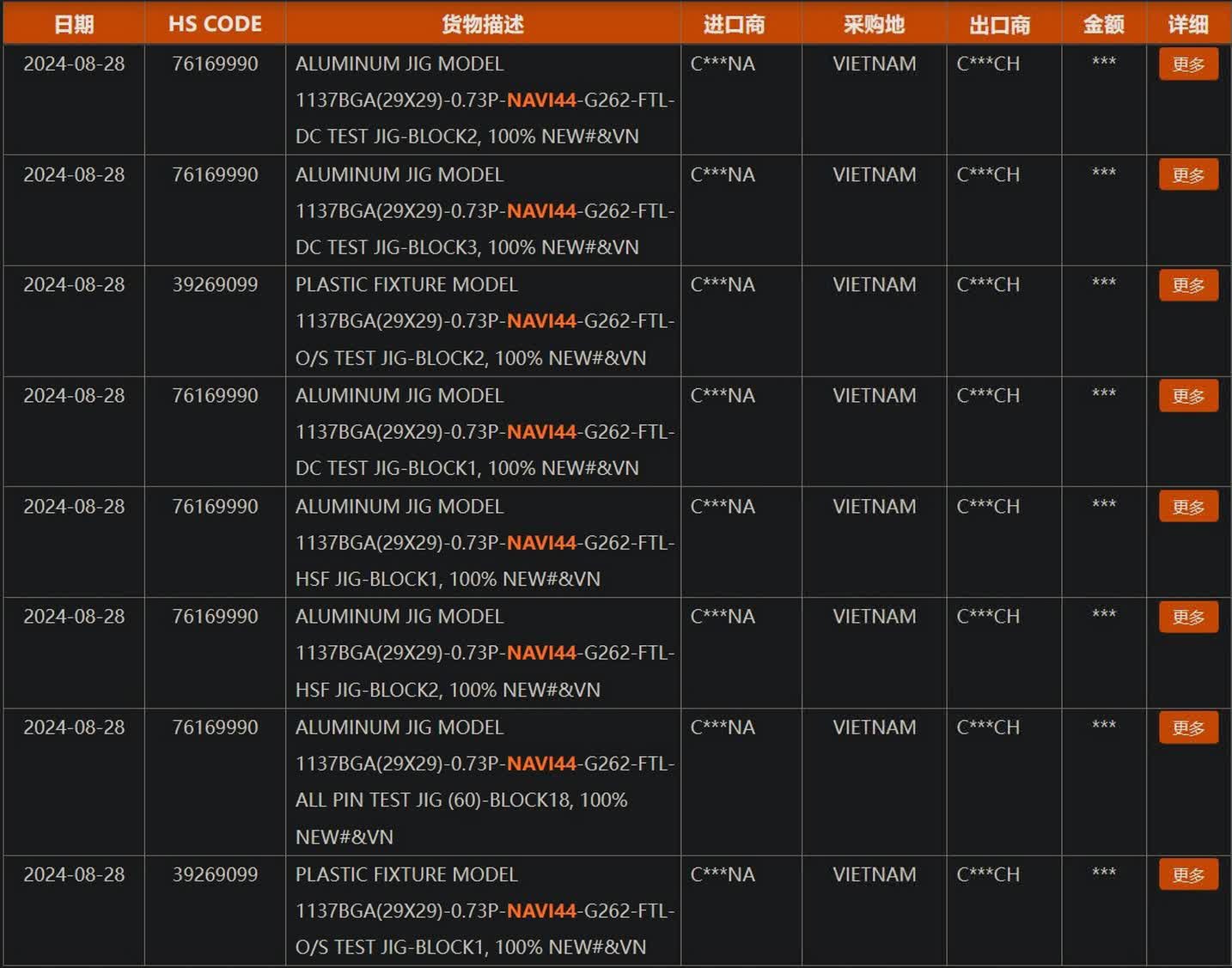Rumor mill: AMD's Navi 44 "RDNA 4" GPU is rumored to feature a significantly smaller package size compared to Navi 33, the smallest GPU in the Radeon RX 7000 series. However, it will still be larger than Navi 24, which powers entry-level SKUs in the Radeon RX 6000 lineup. Navi 44 is expected to drive lower-end graphics cards in the upcoming Radeon 8000 family due out early next year.

Navi 44 will reportedly feature a package size of just 29 x 29 mm, or 841 sq mm. This makes it approximately 31 percent smaller than Navi 33, which has a 35 x 35 mm package size. However, it will still be around 25 percent larger than the 28 x 24 mm package size of Navi 24.
This information comes from shipping manifests published on the nbd.ltd website and was spotted by well-known leaker @Olrak29_. The listing also revealed that the Navi 44 GPU will utilize the BGA137 socket.
Navi 44 and Navi 48 will be the two main GPUs powering the Radeon 8000 family. While Navi 44 will handle the entry-level SKUs in the next-gen lineup, Navi 48 is expected to drive the more premium offerings. AMD is rumored to unveil its flagship RDNA 4 cards at CES 2025 in January, though the more affordable SKUs powered by Navi 44 are only expected to launch in the second quarter.
It's worth noting that the actual die sizes for both Navi 44 and Navi 48, along with their specs, remain unknown. However, rumors suggest AMD is preparing at least two different cards based on Navi 44, while the rest of the Radeon 8000 family may be powered by Navi 48. These cards will compete with NVIDIA's Blackwell lineup, though they are unlikely to challenge the flagship RTX 5090.
Speaking of the RTX 50 series, Nvidia is expected to launch its next-gen offerings early next year, with upgrades that include support for up to 36GB of GDDR7 memory and 1,536 GB/s of bandwidth. While full specs remain under wraps, rumors indicate a significant performance boost over the RTX 40 series, delivering smoother gameplay and faster rendering.
AMD's Navi 44 "RDNA 4" GPU package size could be much smaller than Navi 33
